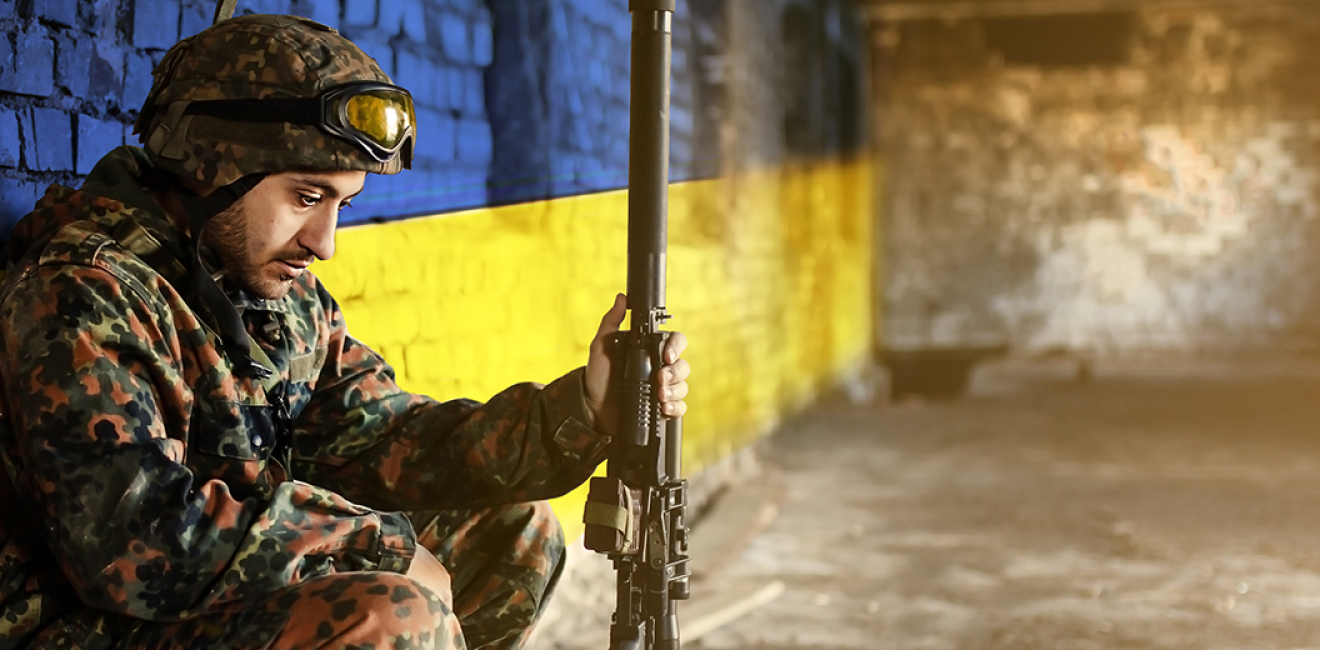
A blog of the Wilson Center

More Russians were killed in Ukraine in the first three weeks of the invasion than the U.S. lost in Iraq and Afghanistan combined.
Russia is paying a high price for its war against Ukraine. As the war enters its second month, according to a NATO official, at least 7,000 Russian troops have been killed…and, as of mid-March, the upper estimate is 15,000. If the death toll is “only” 7,000, it is already higher than U.S. losses over twenty years in Iraq and Afghanistan combined. At the upper end, it exceeds Soviet losses in the ten-year occupation of Afghanistan during the 1980’s.
Of course, the figures Russian officials admit to are significantly lower: 1,351 killed according to the latest announcement. Since the Kremlin has formally criminalized calling the invasion a war—claiming the term spreads disinformation—Russian news outlets have been unwilling to seek the real death toll. International journalists have reported on overwhelmed morgues in Belarus and mobile crematoriums designed to conceal the scale of Russia’s loss.
Digital sleuths have reviewed thousands of images from the war to determine that by the end of March, Russia had lost more than 2,000 vehicles to Ukrainian fire, breakdowns, and abandonment, with each one carrying up to a dozen troops. Then, on March 21, the pro-Kremlin tabloid Komsomolskaya Pravda reported that “According to Russian defense ministry data … 9,861 Russian soldiers had been killed in action and another 16,153 had been wounded.” Six hours later, the number was removed from the website, and the paper said that it had been hacked.
The real scale of Russia’s loss will remain mysterious long after the war. But what is clear is that by the time it’s finished, Putin’s “special military operation” will result in the largest Russian death toll since the Second World War.

28,000 women applied for a mere 30 train driver jobs in Saudi Arabia.
Until reforms enacted in June 2018, Saudi Arabia barred women from even obtaining a driver’s license; less than four years later, 28,000 women recently applied for 30 train driver positions to operate a high-speed line between the holy cities of Mecca and Medina. This surge of female applicants for driving jobs with the Spanish company Renfe follows an ongoing series of reforms in Saudi Arabia that have eased the male guardianship system and other restrictions on women’s agency.
In 2016, Crown Prince Mohammed bin Salman (or MBS) announced his "Vision 2030” initiative, which aims to reduce Saudi Arabia’s economic dependency on the oil industry. Part of this strategy includes mobilizing domestic workforce participation, especially among women. The Saudi government set a target of 30% female participation in the workforce by 2030—nearly double its rate from 2000. They had exceeded their goal ten years early, reaching a rate of 33.2% by 2020. The Crown Prince has paired these professional advancements with progressive cultural reforms regarding women’s attire and gender segregation in public places.
To be clear, Saudi Arabia has a long way to go in realizing women’s rights. Human rights activists continue to criticize the kingdom’s structural gender discrimination, whereby women are still minors under law. MBS may have declared that women’s right to drive motorized vehicles is in keeping with Sharia law, but at the same time, activists from the Women to Drive Movement were detained and later faced punishment, even after the reforms were made. As a result of these detentions and other human rights abuses, including the grisly murder of journalist Jamal Khashoggi, Saudi Arabia lost its seat on the UN Human Rights Council in 2020. On the road to 2030, we will see if Saudi Arabia can continue its crash course in modernizing its culture and economy, or if this strange dichotomy of reforms and repression will eventually force some kind of reckoning.

In response to Russia’s invasion of Ukraine, the seven other members of the Nobel Peace Prize-nominated Arctic Council have protested Moscow’s Chairmanship of the Council by walking out.
Another casualty of the unprovoked Russian invasion of Ukraine is the crucial work of the Arctic Council, an intergovernmental forum promoting peace and cooperation in the Arctic region. Russia currently holds the Chairmanship for the 2021–2023 term, but in a joint statement released on March 3rd, the seven other member countries in the Arctic Council—Canada, Denmark, Finland, Iceland, Norway, Sweden, and the United States—announced a temporary pause in their participation in all Council meetings. Russia’s invasion of Ukraine represents a violation of the Council’s “core principles of sovereignty and territorial integrity,” the statement asserted.
Nominated in February 2022 for a Nobel Peace Prize, the Arctic Council plays a central role in ensuring the peaceful and prosperous future of the region, which feels the effects of climate change more than anywhere else on the planet. Yet as much as the Arctic’s environmental shifts and economic importance demand cooperation, these same factors have made it a hotly competitive sphere, especially for Russia, which owns 53% of the Arctic coastline. Since 2007, the Arctic has been the focus of a Russian strategy to enhance its security, economic prosperity, and to project an image of dominance to its own people and the world. Russia has built a string of 475 military sites over six years along its Arctic frontier, and is seeking to strengthen its control of the Northern Sea Route, a shipping route that links the Atlantic and Pacific oceans.
Warming water has opened the Arctic to exploitation by nearby states including Russia, but climate change is also complicating Russia’s plans, as coastlines are newly vulnerable to erosion and roads, pipelines, and buildings are affected by permafrost thaw. With 22% of Russia’s total exports and 80% of its gas exports coming from its Arctic territory, the effects of the environment on gas and oil infrastructure, and vice versa, will require deft mitigation to avoid jeopardizing the country’s economy in the long run.
Author

Explore More in Stubborn Things
Browse Stubborn Things
Spying on Poachers

China and the Chocolate Factory

India: Economic Growth, Environmental Realities
